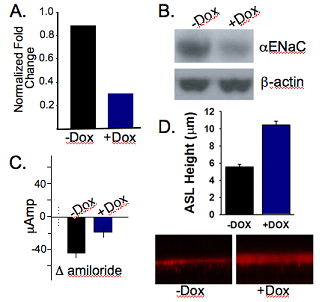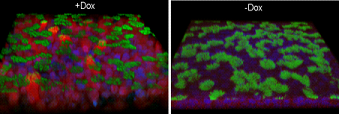Molecular Biology of Pulmonary Epithelium
The Marsico Lung Institute has extensive capabilities in the molecular biology of human airway epithelia. With respect to the cell stocks mentioned, most stocks have been characterized for CFTR status and are available for other genetic studies. Specific molecular capabilities now include:
- Studies of gene expression in human pulmonary epithelia: Available are techniques and data that have emanated from extensive Affymetric analyses of whole genome expression in human airway and alveolar epithelia, and also more recent data generated from high throughput sequencing (454 pyrosequencing) of RNA to produce “RNA seq” libraries of human pulmonary epithelia under a variety of conditions.
- Gene transduction capacities in pulmonary epithelia: These capacities include the ability to express both conventional transgenes, siRNAs, and shRNAs in human pulmonary epithelia. The vectors of choice for these techniques include equine infectious anemia virus (EIAV) gene transfer and shRNA expression (Fig. 5), paramyxovirus (RSV/PIV3) vectors, AAV vectors, adenoviral vectors, and lipids/plasma formulations.

